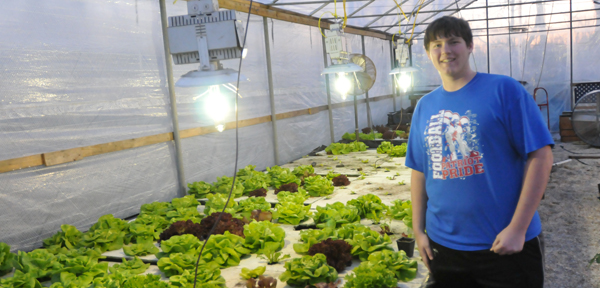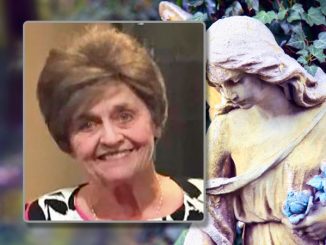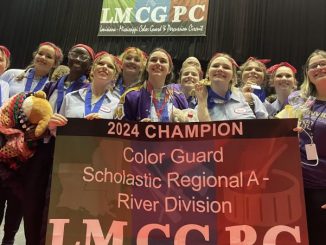
Uses rotten wood, fish to grow veggies
Most gardeners use soil and plenty of sunlight to make their plants grow, but 16-year-old Brad Frazier uses running water, a tub full of fish, rotting wood and artificial lighting in his greenhouse vegetable garden.
Upon entering the Frazier household in the Oak Manor neighborhood of St. Rose, one can immediately see one the family’s great passions on display. Under a small table displaying his mother’s art set and a recently completed portrait, Brad shows off more than 100 lettuce seedlings he has growing under a fluorescent lamp in a foam substance made of crushed rock.
Brad is a young gardener and you may have noticed his Bradaponics stand at the German Coast Farmer’s Market at Ormond Plantation or at the Gretna Farmer’s Market. He alternates between the two each Saturday.
Brad, along with his father Lonnie, has been developing his gardening techniques for the past four years and has turned his back yard into a high-yield aquaponic and hydroponic produce-growing operation.
Their passion for greenhouse gardening has centered on developing an aquaponics system that utilizes natural nutrients provided by water filtered through a fish tank on one end and a barrel containing rotting wood on the other end.
“Once we get this up and running, we’ll be able to leave it for weeks at a time without having to do anything,” Brad said.
In all, the Fraziers have about 30 different varieties of vegetables and herbs growing in their greenhouse, including 10 types of lettuce, five types of peppers and three types of tomatoes.
René Schmitt, LSU AgCenter agent for St. Charles Parish, said he has not seen another aquaponics setup as sophisticated as the Frazier’s.
“It is quite unique in terms of the system that they operate with using fish emulsion that they generate through fish waste,” Schmitt said.
Schmitt believes the Fraziers are on the front end of a revolution in personal gardening.
“I think greenhouse production is certainly making its mark for young growers, certainly where land is not as readily available,” Schmitt said. “With a greenhouse, you can grow a sizeable crop in less space and reap the same rewards with less investment. Plus you are controlling the environment without Mother Nature having to provide the proper environment.”
Before beginning their foray into home gardening, the Fraziers admit they did not even know the basics about home gardening, much less about the intricacies of aquaculture gardening.
Three years later they had built their own greenhouse and filled it with experimental gardening projects such as aquaponic, hydroponic, bag culture and aeroponic gardening.
“Brad can weld, do electrical and plumbing now,” Lonnie said. “It’s even gotten to the point where the handyman at school will come grab him out of class if they need help with something.”
The Fraziers began the journey with a visit to a large greenhouse at Epcot Center in Disney World, which they visited numerous times throughout Brad’s childhood before he decided to begin a gardening project himself.
“It took trial and error, a lot of trial and error,” Brad said.
As a result of putting together an entire high functioning state-of-the-art garden on a shoestring budget, Brad has had to do much of the work on his own and improvise with what was available.
This particularly came to a head after their first greenhouse and all of their vegetables were destroyed last August during Hurricane Isaac.
“After Isaac took everything away we were about to throw our hands up and be done with it, but over Christmas break Brad went down to the neighbor’s house who still had a fence down and convinced them that he could build a new one for them,” Lonnie said. “So now they have a semi-professionally built fence and we used the money the neighbor gave us to build a new greenhouse.”
The new greenhouse is constructed from reclaimed lumber and piping the Fraziers have bent, cut and welded themselves. The plastic sheeting on the structure’s front was salvaged from the wreckage of their old greenhouse. Slightly rusted lighting fixtures Brad found in a dumpster behind a lighting warehouse provide a few more hours a day of photosynthesis to speed the growing process.
Brad is also particularly proud of a pallet to which he has attached wheels and a handle so he can pull goods around the back yard.
He has even taken tomato plants from a local commercial greenhouse that were nearly dead and nursed them back to health.
“He has no shame,” Lonnie said. “He’ll take anything he thinks he can use.”
The aquaponics systems is composed of a network of large wooden boxes on raised platforms with rubber bladders in them that are continuously irrigated through pvc pipe. The pipe transports water from the fish tank to the garden tank to a filter filled with rotting wood. Then water is then taken to another filter and back into the fish tank.
Brad pointed to the second filter, which is a large vinyl trash can with irrigation hoses sticking out either end, where a small, round laundry basket was fitted inside.
“That’s our vortex filter,” he said. “It causes the water to flow in a circular pattern and all heavy sediment falls to the bottom of the barrel.”
Brad is a junior at John Curtis Christian High School where, in addition to being a science fair participant, he plays football and was on last year’s team that won the national high school football championship.
“Everyone kind of writes us off as a jock school, but we have a very underrated science program. We even beat the really academic-oriented schools like Ben Franklin and Jesuit,” Brad said.
Just last week, he had a chance to prove his scientific prowess when he placed second in the regional science fair with his experiment showing the different yields in tomato crops in traditional gardening, aquaponic gardening and hydroponic gardening.
Although his experiment showed the greatest yield over a six-week period with 29 tomatoes produced by hydroponic means, Brad said after a slow start in the last few weeks the aquaculture tomatoes continually progressed and eventually produced 25 tomatoes. The control group, planted by traditional means directly in the ground, produced only six tomatoes.
“I think if we would have extended it a few more weeks we would have seen the aquaculture plants overtake the hydroponic ones,” Brad said.
By coming in second in the regional competition, Brad will go on to participate in the state science fair competition.
Brad said he has many goals in continuing to pursue aquaponic gardening. In the short-term, he is trying to get enough money together to buy his first vehicle.
“I’d like a Jeep. That would be nice,” he said.
Although he has focused most of his energy on setting up his own greenhouse setup, Brad said he is now branching out and starting to set up greenhouses for his neighbors with hopes to get into the business of building them commercially on a large scale. However, his next step is to go to college to pursue agriculture science.
“He’s really pushing the football because that may get him to LSU and serve the purpose of getting into the agriculture program, but if that doesn’t work he has the biology and science fairs that will end him up in the same place either way,” Lonnie said.
Brad said he would also like to get an internship at The Land at Epcot Center where he first saw aquaponic gardening firsthand. However, his overall goal is to build a career for himself.
“I never want to have to work for anyone,” Brad said. “I want to be able to take what I’ve learned and expand it into a self-sustaining business that I can be proud of.”




Be the first to comment